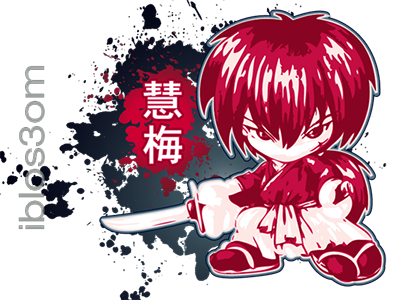
Our naming convention of colors cannot be duller than the primary red, blue and yellow and secondary colors of purple, green and orange. Thanks to the advent of the web and its coloring system (RGB and Hex codes) and Crayola, here are a few more names that can add pizzaz and flash to your color vocabulary.
Bisque
Hex: #ffe4c4
RGB: 255, 228, 196
CMYK: 0, 11, 23, 0
Web Safe: ffcccc
RGB: 255, 228, 196
CMYK: 0, 11, 23, 0
Web Safe: ffcccc
[ Pale Orange ]
Bisque is probably a shortened and altered form of biscuit (meaning “earthenware or porcelain after the first firing and before glazing”), which comes in turn from the Anglo-French (pain) besquit, “twice-cooked bread.” One example of twice-cooked bread, a teething biscuit, can indeed be the color of such earthenware.
Fallow
Hex: #c19a6b
RGB: 193, 154, 107
CMYK: 25, 38, 65, 2
Web Safe: cc9966
RGB: 193, 154, 107
CMYK: 25, 38, 65, 2
Web Safe: cc9966
[ Desaturated Orange ]
Fallow is, in fact, one of the oldest color names to ever exist in the English language. Though not a considered a “pretty” color by some, the pale brown is named after the color many would see when looking into fallow fields as well as the soil, which was often sandy. The word fallow, to express the color, was first recorded in 1000. It is said that the color is also known in South African and Indian cultures as Ravi brown.
Gamboge
Hex: #e49b0f
RGB: 228, 155, 15
CMYK: 10, 42, 100, 0
Web Safe: cc9900
RGB: 228, 155, 15
CMYK: 10, 42, 100, 0
Web Safe: cc9900
[ Vivid Orange ]
Think of spicy mustard and think of gamboge, but a little bit darker. The color is named after the gamboge tree, which is known for its yellow resin. The color comes from Cambodia, where in the 12th century painters would use the color as a watercolor paint. Besides being used as a watercolor, the color has also been used as a varnish for wood. Gamboge as a color started to spread, and in the 17th century made its way to Europe, where it was first used in the English language in 1634.
Amber
Hex: #ffbf00
RGB: 255, 191, 0
CMYK: 0, 27, 100, 0
Web Safe: ffcc00
RGB: 255, 191, 0
CMYK: 0, 27, 100, 0
Web Safe: ffcc00
[ Pure Orange ]
The color amber is a pure chroma color, located on the color wheel midway between yellow and orange. The color-name is derived from the material also known as amber, which is commonly found in a range of yellow-orange-brown-red colors; likewise, as a color amber can refer to a range of yellow-orange colors. In English the first recorded use of the term as a color-name, rather than a reference to the specific substance, was in 1500.
Mango Tango
Hex: #ff8243
RGB: 255, 130, 67
CMYK: 0, 61, 79, 0
Web Safe: ffcc00
RGB: 255, 130, 67
CMYK: 0, 61, 79, 0
Web Safe: ffcc00
[ Light Orange ]
Crayola issued this color in 2003 under the name Mango Tango, and is currently available in the 120 pack of crayons.
Princeton Orange
Hex: #f46f1b
RGB: 244, 111, 27
CMYK: 0, 70, 100, 0
Web Safe: ff6633
RGB: 244, 111, 27
CMYK: 0, 70, 100, 0
Web Safe: ff6633
[ Pure Orange ]
This is the color that symbolizes Princeton University. The first recorded use of Princeton orange as a color name in English was in 1928.
Bittersweet
Hex: #fe6f5e
RGB: 254, 111, 94
CMYK: 0, 71, 60, 0
Web Safe: ff6666
RGB: 254, 111, 94
CMYK: 0, 71, 60, 0
Web Safe: ff6666
[ Soft Reddish Orange ]
The oval berries of the European bittersweet plant taste first sweetish, and then bitter. But it was the American plant called “false bittersweet,” with its orangey-colored fruits, that inspired the color name bittersweet.
Vermilion
Hex: #e34234
RGB: 227, 66, 52
CMYK: 5, 89, 88, 1
Web Safe: cc3333
RGB: 227, 66, 52
CMYK: 5, 89, 88, 1
Web Safe: cc3333
[ Bright Red ]
Vermilion is a brilliant red or scarlet pigment originally made from the powdered mineral cinnabar. The word vermilion traces back to the Latin word vermiculus, meaning “kermes.” Kermes are the dried bodies of insects (of the genus Kermes) used to produce this ancient red dye. Spanish painter Francisco de Goya y Lucientes was so fond of this vibrant color that vermilion also became known as goya.
Falu Red
Hex: #801818
RGB: 128, 24, 24
CMYK: 29, 99, 98, 36
Web Safe: 990000
RGB: 128, 24, 24
CMYK: 29, 99, 98, 36
Web Safe: 990000
[ Dark Red ]
Falu red, a dark red tint, has deep meaning in many different areas of Sweden. The purpose of the deep red color was to mimic the color of more expensive brick homes. The color originally came from a copper mine at Falun, which is located in Dalarna, Sweden. Unlike most colors, this one has been around for a long time, since the 16th century, and is still used today.
Caput Mortuum
Hex: #592720
RGB: 89, 39, 32
CMYK: 40, 80, 78, 56
Web Safe: 663333
RGB: 89, 39, 32
CMYK: 40, 80, 78, 56
Web Safe: 663333
[ Very Dark Red ]
Caput Mortuum, in Latin, translates to “worthless remains” or “dead head.” The color name comes from the variety of purples and brownish colors that are created when iron oxide, A.K.A. rust is oxidized. It is said that the color was widely used when painters would paint important people or religious figures such as patrons. It’s a highly popular color used in dying paper as well as oil paints.
Razzmatazz
Hex: #e3256b
RGB: 227, 37, 107
CMYK: 5, 97, 35, 0
Web Safe: cc3366
RGB: 227, 37, 107
CMYK: 5, 97, 35, 0
Web Safe: cc3366
[ Bright Pink ]
Razzmatazz is red-pink color that was invented by Crayola in 1993, and was first found in the Big Box of 96. The color is said to be one very similar to rose, which is found directly in the middle of magenta and red on the color wheel. You can thank Laura Bartolomei-Hill for the name, as she was the one who named the color at the age of five during Crayola’s Name the New Colors Contest.
Mulberry
Hex: #c54b8c
RGB: 197, 75, 140
CMYK: 22, 85, 13, 0
Web Safe: cc3399
RGB: 197, 75, 140
CMYK: 22, 85, 13, 0
Web Safe: cc3399
[ Moderate Pink ]
Mulberry color is a representation of the color of mulberry jam or pie. This was a Crayola crayon color from 1958 to 2003. The first recorded use of mulberry as a color name in English was in 1776.
Orchid
Hex: #da70d6
RGB: 218, 112, 214
CMYK: 22, 64, 0, 0
Web Safe: cc66cc
RGB: 218, 112, 214
CMYK: 22, 64, 0, 0
Web Safe: cc66cc
[ Soft Magenta ]
The color orchid is a light tone of purple. The name originates from the flowers of some species of the vast orchid flower family, such as Laelia furfuracea and Ascocentrum pusillum, which have petals of this color. The first recorded use of orchid as a color name in English was in 1915
Patriarch
Hex: #800080
RGB: 128, 0, 128
CMYK: 61, 100, 14, 3
Web Safe: 990099
RGB: 128, 0, 128
CMYK: 61, 100, 14, 3
Web Safe: 990099
[ Dark Magenta ]
The first recorded use of patriarch as a color name in English was in 1925. In the ancient world, purple was the color worn by Roman Emperors and magistrates, and later by Roman Catholic bishops. Since then, purple has been commonly associated with royalty and piety. This color may be called HTML/CSS purple because its hue is exactly halfway between red and blue and its value is exactly halfway between white and black.
Arsenic
Hex: #3B444B
RGB: 59, 68, 75
CMYK: 75, 62, 53, 41
Web Safe: 333333
RGB: 59, 68, 75
CMYK: 75, 62, 53, 41
Web Safe: 333333
[ Dark Gray-Blue ]
The color arsenic is based around the element arsenic which is a dark gray-blue color. Arsenic is a metalloid that is often naturally found. However, there are other types of arsenic that aren’t the gray-blue color. Some are more of a red-orange tint.
Smalt
Hex: #003399
RGB: 0, 51, 153
CMYK: 100, 91, 6, 1
Web Safe: 003399
RGB: 0, 51, 153
CMYK: 100, 91, 6, 1
Web Safe: 003399
[ Dark Blue ]
The color name comes from the blue glass of the same name. Smalt is created by fusing together – melting – potassium carbonate, silica, and cobalt oxide; the word’s Germanic ancestor means “to melt.” The original, darker powder blue color (also known as “smalt”) referred to powdered cobalt glass, which was of a deep, dark blue hue and used in laundering and dyeing applications. The cobalt blue glass was itself made from zaffre.
Brandeis Blue
Hex: #0070ff
RGB: 0, 112, 255
CMYK: 80, 57, 0, 0
Web Safe: 99ffff
RGB: 0, 112, 255
CMYK: 80, 57, 0, 0
Web Safe: 99ffff
[ Pure Blue ]
Brandeis blue is the tone of azure used in association with Brandeis University. The university administration defines Brandeis Blue as corresponding to the Pantone color of 293.
Cerulean
Hex: #007BA7
RGB: 0, 123, 167
CMYK: 87, 43, 18, 1
Web Safe: 006699
RGB: 0, 123, 167
CMYK: 87, 43, 18, 1
Web Safe: 006699
[ Dark Blue ]
Cerulean is a color term that may be applied to certain colors with the hue ranging roughly between blue and cyan, overlapping with both. It also largely overlaps with azure and sky blue, although cerulean is dimmer. The first recorded use of cerulean as a color name in English was in 1590. The word is probably derived from the Latin word caeruleus, “dark blue, blue or blue-green”, which in turn probably derives from caelulum, diminutive of caelum, “heaven, sky”
Celeste
Hex: #B2FFFF
RGB: 178, 255, 255
CMYK: 24, 0, 5, 0
Web Safe: 0066ff
RGB: 178, 255, 255
CMYK: 24, 0, 5, 0
Web Safe: 0066ff
[ Pale Cyan ]
Celeste is the colloquial name for the pale turquoise blue color associated with Italian bicycle manufacturer Bianchi S.p.A and sometimes known as Bianchi Green. In Italian, as the name indicates (Celestial), it is an attempt to reproduce the color of clear skies. In English, this color may also be referred to as Italian sky blue.
Feldgrau
Hex: #4d5d53
RGB: 77, 93, 83
CMYK: 68, 48, 62, 30
Web Safe: 666666
RGB: 77, 93, 83
CMYK: 68, 48, 62, 30
Web Safe: 666666
[ Very Dark Grayish Cyan – lime green ]
A German color, translating to “field gray,” feldgrau was the color of German uniforms worn from 1907 until late 1945. The gray-green color is very similar to the greens, grays, and browns used in more widely used army uniforms, such as those of the U.S. Army. (coincidentally the web safe numbers has one too many 6. Apt name? …just saying)
Xanadu
Hex: #738678
RGB: 115, 134, 120
CMYK: 57, 36, 53, 9
Web Safe: 669966
RGB: 115, 134, 120
CMYK: 57, 36, 53, 9
Web Safe: 669966
[ Dark Grayish Cyan – lime green ]
Xanadu is a green-gray color that comes from a plant known as the Philodendron. The plant leaves are generally a green color with a tint of gray. This plant is widely seen in Australia, but it is said that the plant got its name from Xanadu, which was an ancient city located in Inner Mongolia, China.
Verdigris Green
Hex: #43b3ae
RGB: 67, 179, 174
CMYK: 69, 7, 36, 0
Web Safe: 33cc99
RGB: 67, 179, 174
CMYK: 69, 7, 36, 0
Web Safe: 33cc99
[ Moderate Cyan ]
Verdigris came into English in the 14th century from the Anglo-French vert de Grece, literally, “green of Greece.” Ancient Greeks manufactured this pigment by hanging copper plates over hot vinegar in a sealed container. When copper naturally oxidizes, a verdigris green film forms on its surface – as it has, for example, on the Statue of Liberty.
Malachite
Hex: #0BDA51
RGB: 11, 218, 81
CMYK: 69, 0, 96, 0
Web Safe: 00cc66
RGB: 11, 218, 81
CMYK: 69, 0, 96, 0
Web Safe: 00cc66
[ Vivid Cyan – lime green ]
Malachite is also known as basic green 4 and is often used when creating a green dye. This vibrant green comes from the carbonate mineral known as Malachite, or copper carbonate. In the 1800, the mineral was widely used for green paints because it was lightfast and often varied in color. The color is one that is seen rampant in history.
Chartreuse
Hex: #7fff00
RGB: 127, 255, 0
CMYK: 48, 0, 100, 0
Web Safe: 66ff00
RGB: 127, 255, 0
CMYK: 48, 0, 100, 0
Web Safe: 66ff00
[ Pure Green ]
Chartreuse is a color halfway between yellow and green that was named because of its resemblance to the green color of one of the French liqueurs called green chartreuse, introduced in 1764.
Hex: #DFFF00
RGB: 223, 255, 0
CMYK: 18, 0, 100, 0
Web Safe: ccff00
RGB: 223, 255, 0
CMYK: 18, 0, 100, 0
Web Safe: ccff00
[ Pure Yellow ]
Chartreuse Yellow is a yellow color mixed with a small amount of green that was named because of its resemblance to the color of one of the French liqueurs called yellow chartreuse, introduced in 1838.


